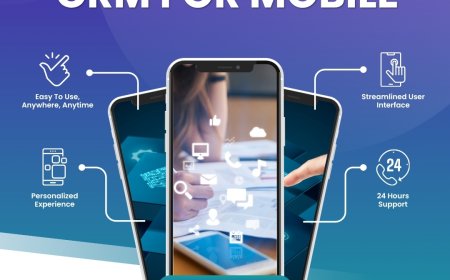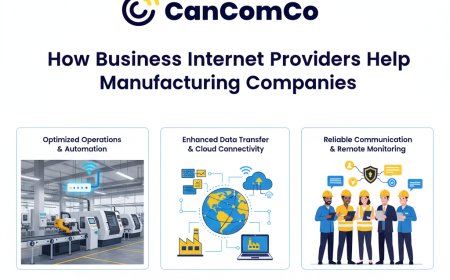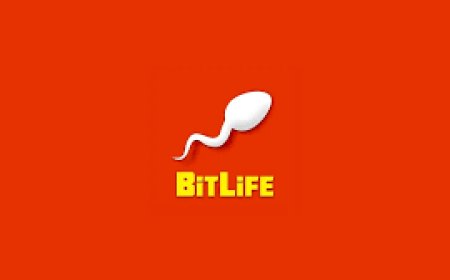How to Pitch at Fort Worth Startup Week
How to Pitch at Fort Worth Startup Week Fort Worth Startup Week is more than just a series of events—it’s a dynamic ecosystem where innovation meets opportunity. Held annually in the heart of Texas, this week-long gathering brings together founders, investors, mentors, and industry leaders to celebrate entrepreneurship and accelerate growth. At the center of this vibrant community is one of the mo
How to Pitch at Fort Worth Startup Week
Fort Worth Startup Week is more than just a series of events—it’s a dynamic ecosystem where innovation meets opportunity. Held annually in the heart of Texas, this week-long gathering brings together founders, investors, mentors, and industry leaders to celebrate entrepreneurship and accelerate growth. At the center of this vibrant community is one of the most critical skills any founder can master: the art of the pitch.
Pitching at Fort Worth Startup Week isn’t just about delivering a polished presentation. It’s about connecting with the right people at the right time, conveying your vision with clarity and conviction, and turning a five-minute slot into a life-changing opportunity. Whether you’re presenting to angel investors, corporate partners, or potential co-founders, your pitch is your most powerful tool for gaining traction, securing funding, and building momentum.
This guide is your comprehensive roadmap to mastering the pitch at Fort Worth Startup Week. From preparation and delivery to storytelling and follow-up, we’ll walk you through every step, equip you with proven best practices, highlight essential tools, and share real-world examples from past participants. By the end of this guide, you won’t just know how to pitch—you’ll know how to make your pitch unforgettable.
Step-by-Step Guide
1. Understand the Event Structure and Audience
Before you write a single line of your pitch, you need to understand the context in which you’ll be delivering it. Fort Worth Startup Week features multiple pitch formats: elevator pitches, startup showcases, investor panels, and pitch competitions with timed slots (typically 3–7 minutes). Each format has different expectations.
For example, the “Pitch Slam” competition is judged by local investors and entrepreneurs who are looking for scalability, market validation, and team strength. Meanwhile, the “Founder Speed Networking” sessions are more conversational—your goal is to spark interest, not close a deal.
Research the event agenda. Identify which sessions align with your goals. Are you seeking funding? Then prioritize investor-facing events. Looking for talent? Focus on the talent and recruitment panels. Knowing your audience allows you to tailor your message effectively.
2. Define Your Core Message
A strong pitch starts with a single, compelling idea. Ask yourself: What is the one thing I want my audience to remember after I’m done speaking?
Many founders make the mistake of trying to explain everything—their technology, their roadmap, their competitors, their financial projections. This overwhelms listeners and dilutes impact. Instead, distill your business into one sentence:
“We help [target audience] achieve [specific outcome] by [unique solution].”
For example: “We help small Texas restaurants reduce food waste by 40% using AI-powered inventory tracking that integrates with their existing POS systems.”
This sentence becomes your anchor. Every slide, every word, every pause should reinforce it.
3. Structure Your Pitch Like a Story
People don’t remember data—they remember stories. The most effective pitches follow a simple narrative arc:
- Hook: Start with a relatable pain point. “Did you know 68% of small restaurants in North Texas throw away $1,200 worth of food each month?”
- Problem: Expand on the issue. Why does it matter? Who is affected? What’s the cost—in money, time, or emotion?
- Solution: Introduce your product or service as the hero. Don’t describe features—describe transformation. “Our platform automatically predicts demand, orders the right ingredients, and alerts chefs before spoilage happens.”
- Proof: Show traction. “We’ve piloted with 12 restaurants. Average reduction in waste: 43%. Customer retention: 92%.”
- Market: Show size and opportunity. “There are over 18,000 independent restaurants in Texas. We’re targeting the top 10%—1,800 high-growth operators—with a $200M TAM.”
- Team: Briefly highlight why you’re the ones to solve this. “Our founder has 8 years in restaurant tech. Our CTO built the inventory system for a Fortune 500 grocer.”
- Ask: End with clarity. “We’re raising a $500K pre-seed round to scale our pilot to 100 restaurants. We’re looking for partners who believe in food equity and operational efficiency.”
This structure mirrors how the human brain processes information: problem → emotion → solution → proof → action. Stick to it.
4. Design Visuals That Enhance, Not Distract
If you’re using slides, remember: they are support, not the pitch. Slides should be minimal, visual, and high-impact.
Best practices:
- Use one idea per slide.
- Replace bullet points with icons, images, or short phrases.
- Include a single powerful statistic on your problem slide.
- Show your product with a screenshot or short video (no more than 10 seconds).
- Use your brand colors consistently—but keep the background clean (white or dark gray).
- Avoid stock photos. Use real photos of your team, customers, or product in action.
Pro tip: If you’re presenting live, disable your slide advance function. Control your pacing manually. This prevents awkward transitions and keeps the focus on you.
5. Practice Ruthlessly—Out Loud and Under Time
Reading your pitch silently in your head is not practice. You must rehearse aloud, in front of others, and with a timer.
Set a strict limit: if the slot is 5 minutes, practice at 4:15. That gives you 45 seconds of breathing room for pauses, audience reactions, or unexpected questions.
Record yourself. Watch the video. Do you say “um” or “like” too often? Are you speaking too fast when nervous? Are your gestures natural or forced?
Practice in front of three types of people:
- A 12-year-old (can they understand your core idea?)
- A non-tech friend (can they explain your business back to you?)
- A seasoned founder or investor (what do they question?)
Each feedback loop will reveal blind spots. Revise. Refine. Repeat.
6. Prepare for the Q&A
The Q&A is where most pitches lose momentum. Investors don’t just want to hear your vision—they want to test your resilience.
Anticipate these common questions:
- “What’s your customer acquisition cost?”
- “Why now?”
- “Who’s your biggest competitor, and why will you win?”
- “What’s your path to profitability?”
- “What would you do if you only had $50,000 left?”
Prepare concise, data-backed answers. If you don’t know the answer, say: “That’s a great question. We haven’t fully modeled that yet, but here’s how we’re thinking about it…” Then pivot to what you do know.
Never argue. Never dismiss. Always respond with curiosity and confidence.
7. Master Your Delivery
Content is king, but delivery is queen.
Stand tall. Make eye contact. Smile when appropriate. Use hand gestures to emphasize points—not to fidget.
Control your pace. Pause after key statements. Let the audience absorb your message. Silence is powerful.
Modulate your tone. Sound excited about your idea—not robotic or rehearsed. Let your passion show. Investors back people, not just products.
Practice breathing techniques. Inhale for four counts, hold for four, exhale for six. This calms nerves and steadies your voice.
8. Bring the Right Materials
Even if you’re not handing out physical cards, be prepared:
- A one-page pitch deck (PDF, optimized for mobile viewing).
- A one-sheet summary with your logo, problem, solution, traction, team, and contact info.
- A QR code linking to your website or demo video.
- A business card with your name, title, email, and LinkedIn URL.
Have these ready in a small folder or digital folder on your phone. Don’t fumble at the end of your pitch.
9. Follow Up Within 24 Hours
The pitch doesn’t end when you step off the stage. The real work begins after.
Within 24 hours, send a personalized email to every person you connected with:
- Reference something specific from your conversation.
- Include your pitch deck or one-sheet.
- End with a clear next step: “Would you be open to a 15-minute call next week?”
Don’t send a generic blast. Personalization is the difference between being remembered and being forgotten.
10. Track Your Outreach
Use a simple spreadsheet to track:
- Who you met
- What they said
- What you promised to send
- When you followed up
- What their response was
This system turns random connections into a pipeline. You’re not just pitching—you’re building relationships.
Best Practices
Be Authentic, Not Perfect
Investors have heard hundreds of pitches. They can spot a script from a mile away. What they crave is authenticity. Speak like yourself. Share a personal story that led you to this problem. Admit a challenge you faced. Vulnerability builds trust.
One founder at Fort Worth Startup Week 2023 began her pitch by saying: “I started this company because I watched my mom spend 3 hours every week just trying to schedule her elderly father’s doctor appointments. I knew there had to be a better way.” That story stuck. She raised $750K.
Focus on Traction, Not Technology
Technology is rarely the differentiator. What matters is what you’ve accomplished with it.
Instead of saying: “We use blockchain to secure transactions,” say: “We’ve reduced fraud-related chargebacks by 70% for 47 clients in six months.”
Metrics speak louder than jargon.
Know Your Numbers Cold
Be ready to answer: What’s your monthly recurring revenue? What’s your churn rate? What’s your LTV:CAC ratio? How much have you raised so far? What’s your burn rate?
If you can’t answer these quickly, you’ll lose credibility. Practice these numbers until they’re automatic.
Don’t Oversell
It’s tempting to say your market is “global” or your product is “the next Uber.” These claims trigger skepticism. Instead, be specific: “We’re targeting the $12B Texas small business logistics market, starting with Fort Worth’s 2,000 independent dry cleaners.”
Specificity = credibility.
Respect the Time
Time is the most valuable currency at Startup Week. If your slot is 5 minutes, end at 4:50. If you’re running over, you’re disrespecting the next speaker and the audience.
Practice with a timer. Use a watch or phone on silent. Have someone signal you when you have 30 seconds left.
Engage, Don’t Lecture
A pitch is a conversation, not a monologue. Ask rhetorical questions: “Have you ever struggled to track inventory without manual spreadsheets?”
Look around the room. Make eye contact with different people. If someone nods, smile. If someone looks confused, pause and clarify.
Bring Energy, Not Scripts
Memorizing your pitch word-for-word makes you sound robotic. Internalize the structure, not the wording. Let your personality shine through.
Speak like you’re telling a friend about your idea—not like you’re reading a legal document.
Know When to Pivot
Not every pitch will land the same way. If you sense the room is more interested in your go-to-market strategy than your tech, pivot. Say: “You know, I think what’s really interesting here is how we’re acquiring customers at 60% lower cost than the industry average. Let me tell you about that.”
Flexibility is a sign of leadership.
Tools and Resources
Pitch Deck Templates
- Canva Startup Pitch Deck Templates – Free, professional, drag-and-drop design.
- Slidebean – AI-powered deck builder that suggests layout and content based on your industry.
- Pitch.com – Interactive pitch decks with embedded videos and analytics.
Practice and Feedback Platforms
- Vidyard – Record and review your pitch with playback and annotations.
- Yoodli – AI-powered speech coach that analyzes filler words, pace, and tone.
- Toastmasters International – Local chapters in Fort Worth offer free public speaking practice.
Market Research Tools
- Statista – Reliable industry data for TAM/SAM/SOM calculations.
- Crunchbase – Research competitors and funding trends in your space.
- Google Trends – Validate demand for your product category in Texas and beyond.
Networking Tools
- LinkedIn – Optimize your profile with keywords like “Fort Worth Founder,” “Pre-Seed Startup,” “Texas Entrepreneur.”
- Eventbrite App – Use the networking feature to connect with attendees before the event.
- Notion – Build a simple CRM to track your pitch contacts, follow-ups, and outcomes.
Local Fort Worth Resources
- Fort Worth Chamber of Commerce – Offers startup support programs and mentorship.
- Texas Innovation Corridor – Connects North Texas startups with regional investors.
- Fort Worth Entrepreneur Network (FWEN) – Monthly meetups and pitch feedback sessions.
- University of North Texas (UNT) Business Incubator – Free workspace and pitch coaching for local founders.
Free Learning Resources
- Y Combinator’s How to Pitch a Startup – 15-minute video on YouTube.
- Paul Graham’s “How to Get Startup Ideas” – Essential reading for founders.
- “The Lean Startup” by Eric Ries – Understand validation before pitching.
Real Examples
Example 1: The Food Waste Startup That Raised $1.2M
At Fort Worth Startup Week 2022, a team called WasteWise pitched a SaaS platform that helps restaurants reduce food waste using AI.
Instead of leading with technology, they started with a story:
“Last year, my cousin, who owns a Tex-Mex spot in Sundance Square, threw out $3,200 in spoiled guacamole. He didn’t know why. He just knew it happened every Friday. That’s when we realized: no small restaurant has the tools to predict demand. So we built a system that integrates with their POS, analyzes weather, events, and historical sales, and auto-orders ingredients. We’ve piloted with 15 restaurants. Average waste reduction: 41%. Revenue per restaurant increased by 18% because they’re buying less, wasting less, and serving fresher food.”
They showed a photo of a chef holding a tablet with their app open. They ended with: “We’re raising a $750K seed round to hire two engineers and expand to Dallas and Austin. We’re already in talks with two regional food distributors.”
Result: Three investors reached out that day. One led a $1.2M round within six weeks.
Example 2: The B2B SaaS Founder Who Got a Corporate Pilot
A founder named Maria pitched a logistics optimization tool for Texas trucking companies. She didn’t have traction yet—just a prototype.
Instead of asking for funding, she asked for a pilot:
“We’re building a route optimization tool that cuts fuel costs by 15–20% for regional haulers. We’ve built a working MVP. We’re not asking for money—we’re asking for one trucking company to test it for 30 days. If it saves you $500 a week, you’ll keep using it. If not, we’ll give you $1,000 for your time.”
She had a simple one-pager with a QR code to the demo. She didn’t mention valuation. She didn’t mention competitors. She made it easy to say yes.
Result: A Fort Worth-based logistics firm agreed to a pilot. Three months later, they became her first paying customer—and referred her to two others.
Example 3: The Failed Pitch That Taught a Lesson
One founder at FW Startup Week 2021 had a great idea: an app for pet owners to find last-minute pet sitters. But his pitch was all features:
- “We use geolocation.”
- “We have a rating system.”
- “We integrate with PayPal.”
- “We’re launching in 12 cities.”
He didn’t say why it mattered. He didn’t show traction. He didn’t explain why he was the one to solve this.
One investor later told him: “I didn’t understand why your app was better than Rover. And I didn’t believe you’d be able to get users.”
He returned the next year with a new pitch:
“There are 1.8 million pet owners in North Texas. 62% have canceled plans because they couldn’t find last-minute care. We’re the only app that connects you with verified local pet sitters who live within 2 miles—and we guarantee a match within 15 minutes. We’ve tested it with 200 users in Fort Worth. 89% said they’d pay $15 for a 2-hour sitter. We’re now processing 35 bookings a week. We’re raising $200K to build our referral engine.”
He raised $300K six months later.
FAQs
How long should my pitch be at Fort Worth Startup Week?
Most formal pitch slots are 5 minutes, with 2–3 minutes for Q&A. Always practice to 4:15 to allow for natural pauses. For networking sessions, aim for a 90-second “elevator pitch” you can deliver anytime.
Do I need slides to pitch?
No—many successful pitches are done without slides. But if you’re in a formal competition or investor session, slides are expected. Keep them simple and visual.
What if I’m nervous?
Nervousness is normal. Even seasoned founders feel it. Breathe. Pause. Speak slowly. Remember: the people in the room want you to succeed. They’re rooting for you.
Can I pitch an idea without a product?
Yes—but you need proof of demand. Surveys, interviews, waitlists, or letters of intent from potential customers count as traction. Investors back conviction backed by evidence.
Should I give away my idea during the pitch?
No. You’re not revealing trade secrets—you’re explaining your value proposition. Most investors won’t steal your idea. They’ve seen hundreds. What they’re evaluating is your ability to execute.
What if I don’t get funding at the event?
Most founders don’t raise money at their first pitch. But they build relationships. Follow up. Stay engaged with the Fort Worth startup community. Attend future events. Keep refining your pitch. Success is a process, not a single moment.
Is Fort Worth Startup Week good for non-tech startups?
Absolutely. Past events have featured food and beverage brands, home services, education tech, and social impact ventures. The key is clarity: what problem are you solving, and who will pay for it?
How do I find out who the investors are before the event?
Check the official Fort Worth Startup Week website and social media channels. They usually publish a list of participating investors, accelerators, and mentors. Research them on LinkedIn. Know what they’ve invested in before.
Conclusion
Pitching at Fort Worth Startup Week isn’t about perfection. It’s about presence. It’s about clarity. It’s about connecting your passion to someone else’s need.
The founders who thrive here aren’t the ones with the flashiest tech or the biggest funding rounds. They’re the ones who know their story, understand their audience, and deliver their message with authenticity and precision.
Use this guide as your blueprint. Practice relentlessly. Listen more than you speak. Follow up with purpose. And remember: every great company started with a single pitch.
Fort Worth Startup Week is your stage. Step onto it with confidence. Speak with conviction. And don’t just pitch your business—pitch your vision. Because the right person is listening. And they’re waiting to say yes.

























